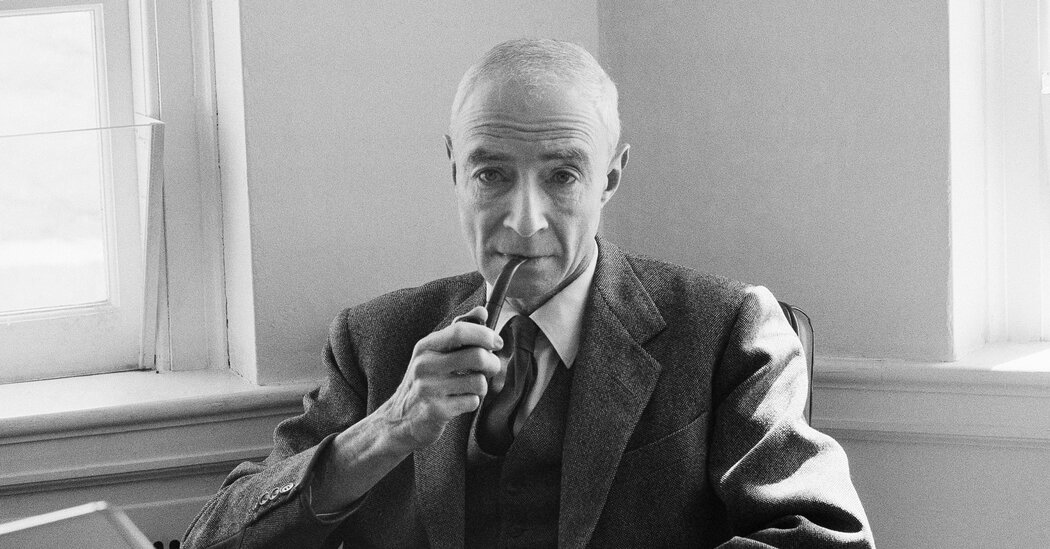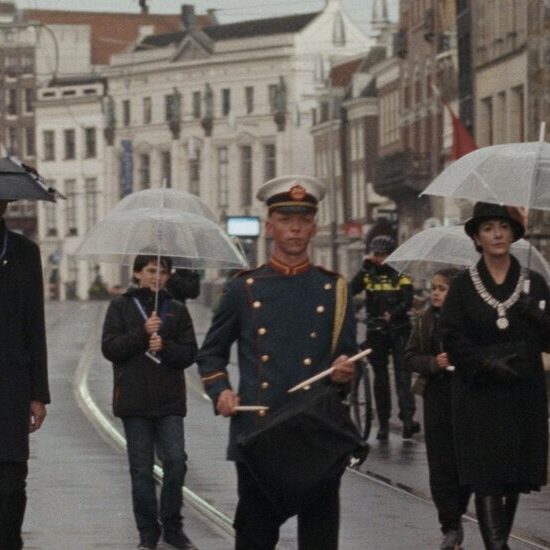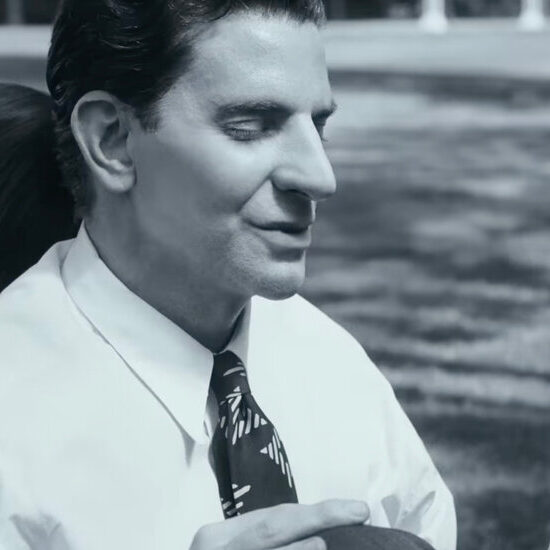
The premise of “Oppenheimer,” Christopher Nolan’s biopic, is straightforward: tell the story of J. Robert Oppenheimer, the physicist known as the “father of the atomic bomb.” But, as with the director’s other movies, the execution is far from simple. The film skips between time periods, and it features a dizzying array of scientists, politicians and possible Communist agents amid a series of government hearings.
Here’s a guide to help you keep track of the real-life characters and events of the movie.
J. Robert Oppenheimer (played by Cillian Murphy)
The American theoretical physicist (played by Cillian Murphy) spearheaded the development of the atomic bomb through the Manhattan Project.
Born in New York City in 1904, Oppenheimer spent his undergraduate years at Harvard before moving to Cambridge, England, for graduate work in physics. There, he grew frustrated with his tutor’s insistence that he focus on lab work instead of theory and is reported to have given the man, Patrick Blackett, a poisoned apple. The tutor never ate the apple, but university officials placed him on probation. That said, the episode is the subject of conflicting stories.
After receiving his doctorate in physics at a German university, Oppenheimer accepted professorships at the University of California, Berkeley, and the California Institute of Technology, helping to pioneer work in an American school of theoretical physics.
With World War II well underway, Oppenheimer was appointed director of Los Alamos, part of the mammoth effort to develop the bomb. Having fallen in love with New Mexico when he was sent there as a boy to recover from dysentery, he established a secret lab in the desert of Los Alamos, N.M., coordinating efforts by top physicists and engineers that culminated in the first nuclear explosion, at Alamogordo on July 16, 1945, known as the Trinity test.
He later directed the Institute for Advanced Study, an independent center for theoretical research, in Princeton, N.J., and became chairman of the General Advisory Committee to the Atomic Energy Commission.
Lewis Strauss (played by Robert Downey Jr.)
Oppenheimer’s primary antagonist in the film, Strauss (Robert Downey Jr.) was chairman of the Atomic Energy Commission and a leader of the campaign to revoke Oppenheimer’s security clearance.
Born in West Virginia, he worked variously as a traveling shoe salesman, an investment bank partner and a bureaucrat helping the future president Herbert Hoover’s Food Administration during World War I. After World War II, President Harry S. Truman appointed Strauss to the Atomic Energy Commission and he became its chairman, pushing for the development of the hydrogen bomb. Strauss later served as acting secretary of commerce under President Dwight D. Eisenhower, but his nomination was rejected by the Senate, in part because of the scientific community’s outrage over his treatment of Oppenheimer.
Jean Tatlock (played by Florence Pugh)
An active member of the Bay Area’s Communist Party, Tatlock (Florence Pugh) was a graduate student at Stanford Medical School when she began dating Oppenheimer in 1936. She helped introduce him to Communist activists, fueling his left-leaning sympathies. She ended her relationship with Oppenheimer in 1939, even as he continued to visit her. Their last meeting, in June 1943, was surveilled by F.B.I. agents. In 1944, the 29-year-old Tatlock was found dead in her bathroom. Most historians conclude she died by suicide.
William Borden (played by David Dastmalchian)
Born in 1920 in Washington, D.C., Borden (David Dastmalchian) had degrees from Yale and Yale Law. He eventually worked as legislative secretary for a Connecticut senator, Brien McMahon, and became staff director of the congressional Joint Committee on Atomic Energy in 1949.
In 1953, most likely with the encouragement of Strauss, he sent a letter to the F.B.I. director, J. Edgar Hoover, suggesting that “more probably than not J. Robert Oppenheimer is an agent of the Soviet Union.” This was the catalyst for a closed-door hearing about Oppenheimer’s Communist ties — depicted in the film — and the eventual revocation of his security clearance.
Ernest Lawrence (played by Josh Hartnett)
A Nobel Prize-winning scientist, Lawrence (Josh Hartnett) was born in 1901 in South Dakota. He earned a doctorate in physics from Yale and became a professor of physics at U.C. Berkeley, where he invented the cyclotron, a particle accelerator that was instrumental to the development of the atomic bomb. It was Lawrence who helped introduce Oppenheimer to the Manhattan Project. After the war, he advocated for the development of hydrogen nuclear weapons.
Edward Teller (played by Benny Safdie)
Born in Budapest, Teller (Benny Safdie) earned his physics doctorate in Germany and was later offered a professorship at George Washington University, becoming a naturalized U.S. citizen in 1941. Known for his research into nuclear energy, he joined Oppenheimer’s team at Los Alamos, where he worked in the theoretical physics division.
Teller was obsessed with hydrogen energy and the development of a hydrogen bomb, which led him to butt heads with other members of the Manhattan Project. After the Soviet Union tested an atomic weapon in 1949, Teller became a primary proponent of developing hydrogen bombs to gain leverage in the Cold War.
He later testified against Oppenheimer in the closed-door hearing, saying, “I feel I would prefer to see the vital interests of this country in hands that I understand better and therefore trust more.”
Did Oppenheimer really meet Einstein?
Yes, they were colleagues at the Institute for Advanced Study. “Though I knew Einstein for two or three decades, it was only in the last decade of his life that we were close colleagues and something of friends,” Oppenheimer wrote in The New York Review of Books in 1966.
However, Nolan has admitted that he made up a key scene between the two: At one point, Oppenheimer goes to the taciturn Einstein for advice on calculations by the Los Alamos team, which showed that the Trinity test could be contained and wouldn’t blow up the world.
“It wasn’t Einstein who Oppenheimer went to consult about it,” Nolan said in a recent interview. “It was Arthur Compton, who directed an outpost of the Manhattan Project at the University of Chicago. But I shifted that to Einstein.”
What are the two hearings featured in the film?
The film revolves around two committee hearings — one, in 1954, depicted in color and the other, in 1959, in black and white.
The first was a four-week secret meeting in which the Atomic Energy Commission deliberated on whether to revoke Oppenheimer’s security clearance. Amid a scare about Soviet technological advances, Oppenheimer’s possible links to left-wing causes had come under scrutiny, and Borden’s letter to Hoover provided the tipping point. When the commission chairman, Strauss, informed Oppenheimer that his security clearance had been suspended, Oppenheimer refused to resign and demanded a hearing from the commission’s Personnel Security Board.
That hearing was one-sided from the beginning, with Oppenheimer’s lawyers barred from accessing confidential materials, while the commission’s prosecuting attorney had access to hundreds of wiretap recordings. Ultimately, the three-person board decided that Oppenheimer was a loyal citizen but that his security clearance should be rescinded.
In 1959, the Senate held a hearing on Strauss’s nomination for commerce secretary, a heated process that Time magazine called “U.S. history’s bitterest battle over confirmation of a presidential nomination.” The nomination was rejected, in a 49-to-46 vote.
What ultimately happened to Oppenheimer?
After losing his security clearance, Oppenheimer continued to teach and conduct research with the support of many in the scientific community, who saw him as a martyr. In 1963, President Lyndon B. Johnson granted him the Enrico Fermi Award, which honors lifetime achievements in energy science.
In 1966, he retired from the Institute for Advanced Study and died from throat cancer the next year.
In December 2022, a few days after a trailer for “Oppenheimer” was released, Energy Secretary Jennifer M. Granholm nullified the 1954 decision to revoke Oppenheimer’s clearance. She cited a “flawed process” that violated the Atomic Energy Commission’s own regulations.
“More evidence has come to light of the bias and unfairness of the process that Dr. Oppenheimer was subjected to,” Granholm said, “while the evidence of his loyalty and love of country have only been further affirmed.”













